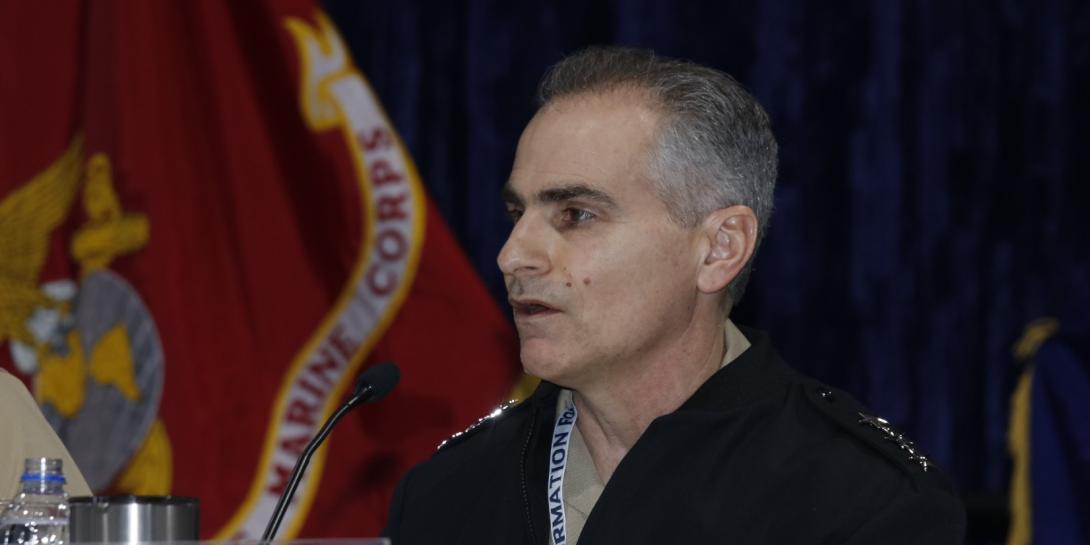RAVEN Takes Flight
The Navy’s Readiness Analytics and Visualization Environment, known as RAVEN, which recently reached full operating capability, provides three dozen data lakes to provide a picture of readiness. The Naval Information Forces, or NAVIFOR, now intends to extend the use of RAVEN to manning, training and equipping readiness and cyber readiness, according to Vice Adm. Brian Brown, USN, commander, NAVIFOR.
The admiral spoke to SIGNAL Magazine and other media during a roundtable at AFCEA and the U.S. Naval Institute’s WEST 2020 conference in San Diego on March 2.
The RAVEN platform, part of the Navy’s extensive digital transformation effort, was created to unite authoritative data sources for systems operation testing, Adm. Brown stated.
“When we started off with RAVEN, the first thing we were really trying to get after was fixing the problem with the systems operation validation tests [SOVATS] for the individual system installs,” the admiral shared. “We were trying to get after why the SOVATS tests were being delayed and why couldn't we get them done on time. Because you'd end up with a ship ready to train in all aspects except for the modernized gear that didn't make it through the process. That's not a good place to start because it just snowballs from there.”
RAVEN cuts down on the lengthy manual efforts of the past needed to compile such information, captures useful data in informative ways and readily displays it. As such, NAVIFOR intends to use it to paint a clear picture of manning, training and equipping material readiness, the admiral reported.
“We started seeing things in the data that we didn't recognize before and we started to see a larger potential for how to [extend its use],” he noted. “I believe that I could use the RAVEN data to help me understand the manning, training, equipping material readiness of all the shore commands that I have administrative control of in a way that [avoids] manually rolling up and manually going into different databases and pulling out and kind of subject.
By connecting different portions of the RAVEN data lakes, the admiral will be able to more easily pull out readiness reports, defined by user. “So, I can look at a communications station or a fleet weather center and I can understand what their manpower looks like in terms of readiness,” he said. “I can look at their equipping status and get a more real-time update on readiness without having to resort to the ways we do it now, which is really manual.”
In addition, the admiral is heading up an extended cyber dashboard effort empowered by the RAVEN tool, which will allow end users to define how they want to see the dashboard.
“Many years ago, we were asked by the fleet to develop individual cyber dashboards for our fleet units,” he recalled. “It was a very small focused effort. This would tell you everything about an individual ship. It would tell you about their network and what their patch levels were, how often they ran their scans and those kinds of things. This is what you're looking for in terms of overall cyber readiness. We hired contractors’ support and it was all very manual. This was one of those things where you were scraping off of different reports and putting these things together. And it took us essentially about a month of effort.”
The development of RAVEN, however, yielded all the central elements of all what was needed to provide a cyber dashboard easily. “And so, we've reduced that time down to a day or so,” he stated. “Now the CNO has asked us to be broader in that view of cyber dashboard for all commanders. And it's actually not that hard because the data is all in these different data sources that we have. And so that's kind of where we're heading.





Comments